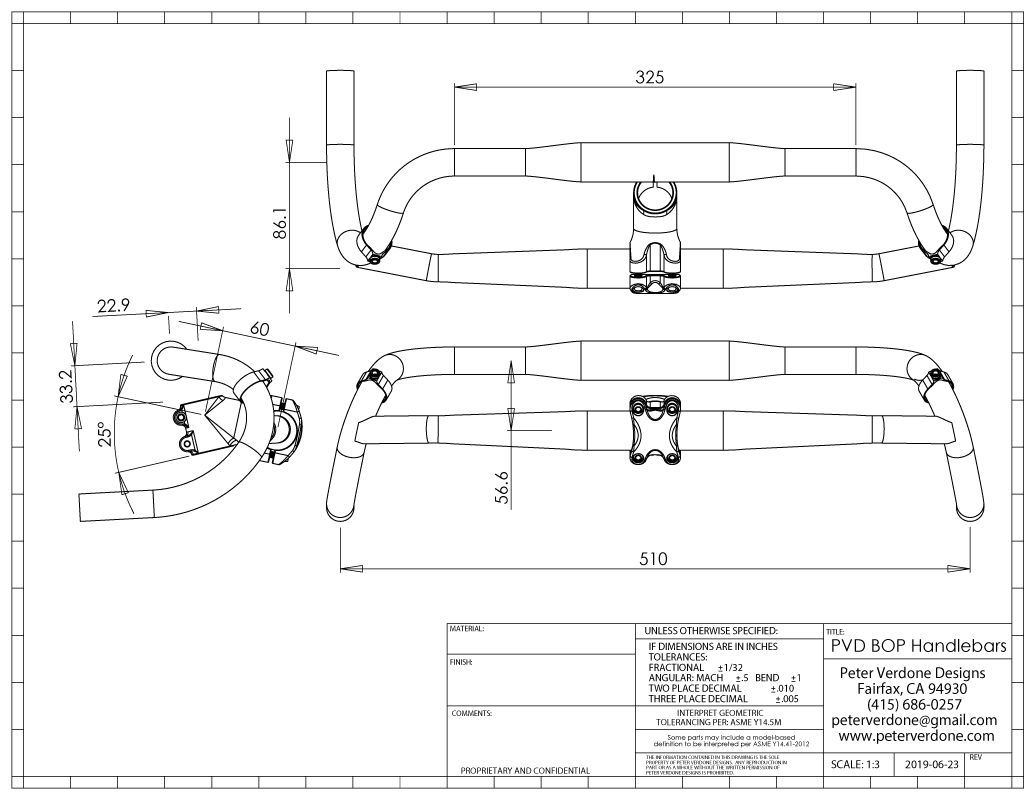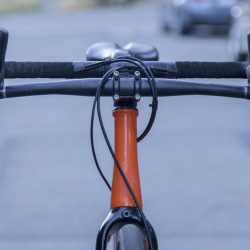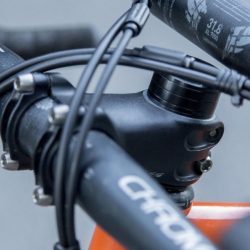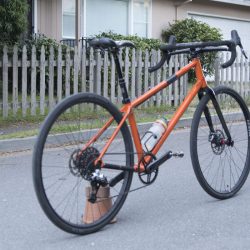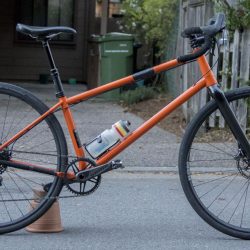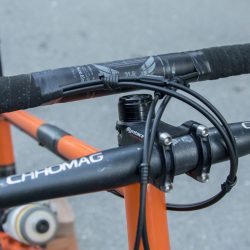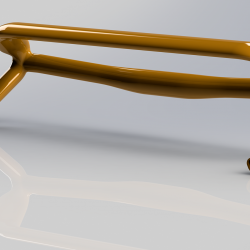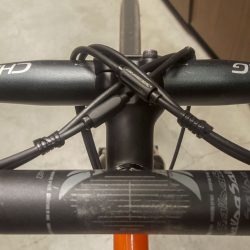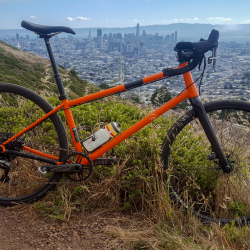I’ve been pestering people and challenging them to make a proper bi-plane bar for the past year or so. We need these for progressive all-road geometries. Nobody understands, blank looks were all I got. I wanted the carbon guys to step up but it was too much for them. I was forced to do it myself…again. I hate having to rescue the roadies but they aren’t capable of actually designing bikes.
Like the Warbird bars, these de-couple the hand grips from the front wheel as traditional means limit geometry concepts. Modern geometries push the head tube axis to locations that make it impossible to use traditional bar/stem combinations. This ‘bi-plane’ bar solves that issue with drop bars. As I mention in my Bird of Prey article, the Canyon Hover Bar (CP01) were designed to eliminate the use of a rise stem, something roadies are incapable of using (WTF?). The bars were a good concept applied for an uninformed task. As Canyon did it, they do nothing for the performance of the bike or allow improved geometry selection. This is a time where that is a paramount issue in design and moving the all-road concept forward. Customers and riders will soon realize that fat tires on a crit bike isn’t how we do this.
The PVD T-47 Airspeeder was designed for complete “all-road” domination. Then, it was easiest to fabricate a set of flat bars to fit the frame. I would work on the drop bar issue later. Over time, the bike has proven itself beyond capable everywhere I go to use it. That with flat bars. It was long overdue to test with drop bars to see if the geometry breaks down in that configuration.
Finally, I was sick of waiting.
The bars were constructed using a narrow 46cm Salsa Cowbell 2 drop bar and an old Chromag Fubar 11 degree flats. The flat bars were cut and fastened using carbon fiber. There were some issues due to my temporary tooling that placed the position of the cross bar a bit off from where I had planned but I was able to get a good fit in the end. I will make better tooling that will eliminate any chance of error in the future.
Glass spheres and epoxy mix made the initial connection and smoothed out the transition between the bars before the carbon went on. My mitering was rather tragic so it took two coats to get it nice.
I did take another shortcut. I left out a fiberglass insulator between the aluminum of the bars and the carbon fiber. This would be unacceptable in a production situation. I expect that I’ll be scavenging from this setup for a newer iteration sooner than the ions can do their damage. I just needed to break through the planning and fussing and move the ball forward on this project. It was getting hung up.
Now I need to find some 48cm or 50cm wing bars to produce an improved version.
Initial road testing shows that the current limitation of this setup is primarily the flexibility and strength of the rider. Climbing out of saddle is limited because of this, the hoods really need to be much farther forward for better climbing but that has nothing to do with the bar design in this case. A new solution may be in the works to address that.
The position of the bars are nearly identical to what would be used on a comfortable road bike. Hand grip isn’t really changed. It’s what goes on beneath where the magic happens.
The additional hand grip area is really really cool. It’s like being in the drops from a body position perspective but with a 90 degree translation at the wrists and a far more aerodynamic profile. I hadn’t thought that this would be possible when designing the bars but it is so nice that it will be optimized in future versions.
One shame for this move was that I had to go down to 11-speeds instead of 12. I’m still waiting on lower cost options from SRAM as an AXS shifter and derailleur is well outside my price range. A 420% reduction isn’t as handy as a 500% reduction. Nothing can match the pure all-road reduction of the Bird of Prey, 644%, but going to that level is outside of my needs currently.
I’ve been using the WTB Exposure 700x30c tires on this bike for the 90% paved trip to work and back. They have been a good size tire for this bike. On the i25 rims, the tires end up being around 34mm wide. Still, they feel peppy enough but can still float a little in rough. For real gravel/trial missions, the tires would go up in size and knob a bit.
I would also reduce the chainring, especially with the 42t cassette, for real gravel missions with climbs. That’s not the state that this bike is shown and some testing there will take place in a few.
Photos were taken with an older bean can style as I need to make a new one in the shop next week. I re-used the bar tape to keep cost down. I’m also still deciding on how to treat the cross bar hand grip.
UPDATE – I decided to put a 80mm x -15deg stem in place of the 60mm I have in the photos. It’s pushing my comfort slightly but puts me in a much better position for out of saddle climbing. It was just too crappy going up with it short and now it’s palatable. This is normal fit stuff and isn’t due to the bar modification. I just need to roll my pelvis more than is casual. I need to update the measured prints to reflect this. Give me a few days.
I’m 5’10”.
The effective seat tube angle is 74 degrees.
Saddle height is 745mm with 172.5mm crank arms.
Here’s a description of a bond of carbon to metal.





